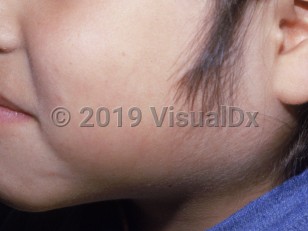Mumps in Child
Synopsis

Mumps significantly declined in the United States after 1967, when the mumps vaccine was introduced, and again in 1977, when the vaccine was recommended for routine use. The incidence of mumps continued to decline with implementation of a two-dose MMR (measles, mumps, rubella) vaccine in 1989. The MMR vaccine prevents most, but not all, cases of mumps and complications caused by the disease. Two doses of the vaccine are 88% (range: 66%-95%) effective at protecting against mumps; one dose is 78% (range: 49%-92%) effective.
Mumps epidemics can still occur in communities of (even highly) vaccinated individuals in close contact, such as in dormitories and on sports teams, due to waning immunity after childhood vaccination allowing for breakthrough cases. Mumps outbreaks can occur any time of year. Mumps is rare in infants less than one year of age.
The prognosis is usually excellent, although, in rare situations, complications can occur including meningoencephalomyelitis, orchitis and epididymitis, oophoritis, pancreatitis, myocarditis, arthritis, thyroiditis, deafness, and dacryoadenitis and optic neuritis. The risk of spontaneous abortion is increased in women who contract mumps during the first trimester of pregnancy. Infection usually results in lifelong immunity.
Codes
B26.9 – Mumps without complication
SNOMEDCT:
36989005 – Mumps
Look For
Subscription Required
Diagnostic Pearls
Subscription Required
Differential Diagnosis & Pitfalls

Subscription Required
Best Tests
Subscription Required
Management Pearls
Subscription Required
Therapy
Subscription Required
References
Subscription Required

